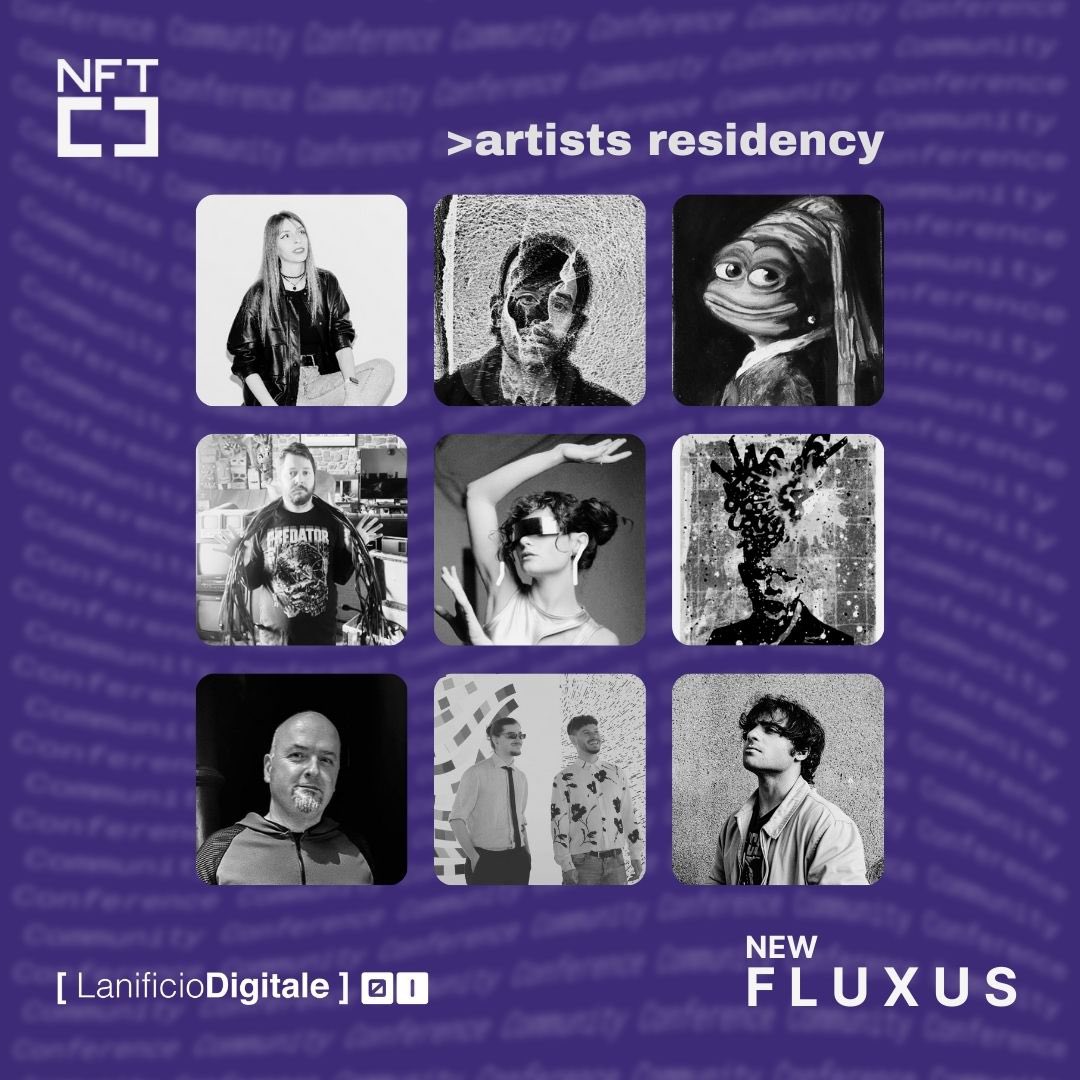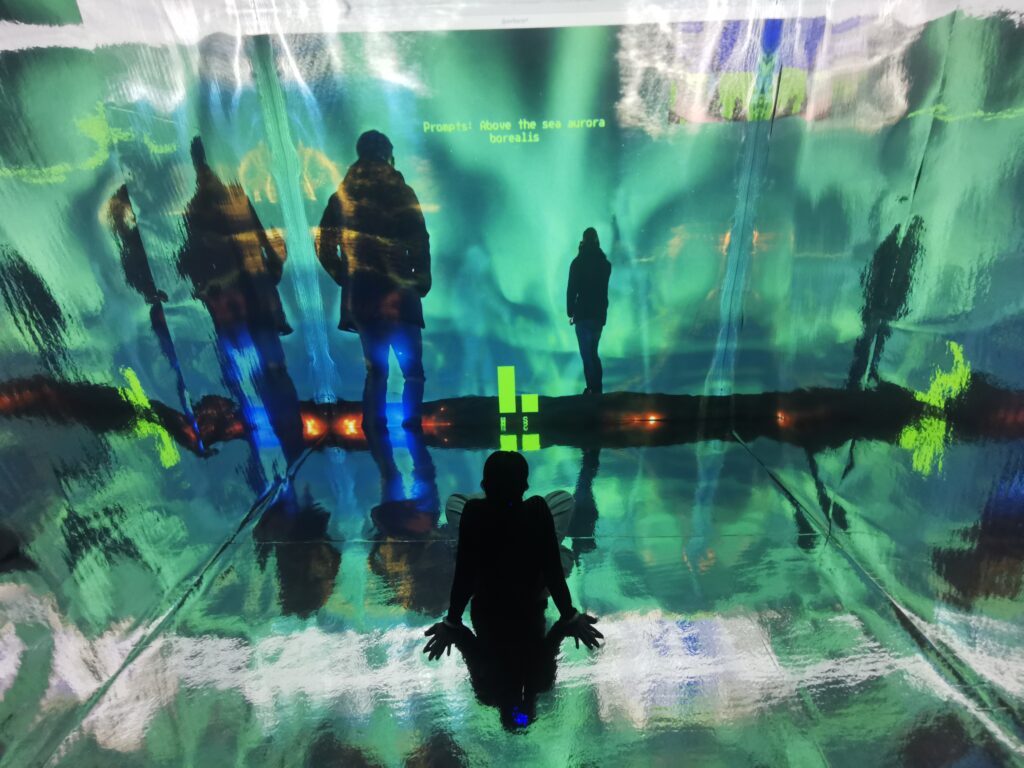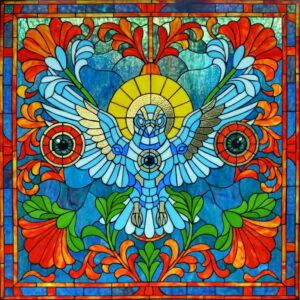
The journey to presenting my NeuroArt installation at NFTcc Naples in May 2024 began with a casual but serendipitous discussion earlier in the year. A Twitter thread about art and technology brought me into the orbit of Luca Martinelli of NFTcc and ultimately led to an invitation to collaborate with BrainSigns and their cutting-edge MindTooth EEG headset.
The Spark: A Chance Recommendation
In January 2024, a conversation about creative tech started circulating on Twitter. Artist E L L A mentioned me as someone to speak with regarding EEG and art, referencing my past work. Back in 2015, I had set up a system to capture EEG data from a NeuroSky headset for Trevor Jones’ #EdinburghHacked exhibition. The goal was to analyse viewers’ brainwave responses to Trevor’s artwork, but the simple headset and noisy exhibition environment meant results were inconclusive. Still, it sparked a fascination with the intersection of neuroscience and creative technology – a fascination that stayed with me.
The Invitation
Following the Twitter thread, I connected with Luca, who shared that BrainSigns was looking to explore artistic applications for their advanced MindTooth EEG headset. Their technology, typically used for serious research such as analyzing cognitive responses during tasks, had never been used to create art before.
Intrigued, I proposed developing an interactive NeuroArt system. The idea was to capture workload and stress levels from participants and translate these into descriptive prompts for a real-time AI model, allowing the brain’s activity to shape the resulting art. This proposal led to my invitation to an artist residency and presentation of the project at NFTcc Naples.

Developing NeuroArt
Designing the NeuroArt system was a challenging but rewarding process. Building on my past experiments, I combined several key technologies:
- EEG Data Processing: Using the MindTooth headset, the system measured participants’ cognitive states in real time, focusing on workload and stress levels.
- AI-Driven Art: These values were converted into prompts for an SDXL Turbo model, which generated visuals dynamically.
- Live Integration: A camera captured the participant in real time, allowing them to appear within the evolving artwork. Backgrounds and prompts shifted based on EEG readings to enhance the immersive experience.
NFTcc Naples: A First Step
At NFTcc Naples, I presented the NeuroArt installation and delivered a talk about its development. Participants engaged with the system, donning the headset and witnessing how their brainwaves influenced the art in real time. The experience was both personal and reflective, offering a glimpse into how technology could visualize internal cognitive states.

At the time, I had no idea where this journey might lead. Naples was an experimental first step, an opportunity to test the concept and share it with an audience. What I learned there helped shape the future of my NeuroArt system, but at that moment, it was simply a chance to explore, create, and connect.
This project would not have been possible without the encouragement of Luca and the NFTcc community, as well as the collaboration with BrainSigns. NeuroArt remains an exciting intersection of art, neuroscience, and AI, and I’m eager to see where it takes me next.


Posted: May 13, 2024 by David Oxley
Written by
David Oxley
You may also be interested in:

BRIDGING WORLDS
From Saturday 3rd - Thursday 8th January 2026, Bridging Worlds brings together a constellation of generative, data-driven, and immersive artworks that sit at the intersection of the physical, digital, and imagined.
EXPOS3D: The Art of the System
Building Trevor Jones’ Digital Revolution The core of EXPOS3D was always clear: surveillance, data capture, and participation under observation. The exhibition invited visitors into a space where technology not only
Exhibition: Perfectly Packed Pearls
I’m excited to share that my exhibition, Perfectly Packed Pearls, is showing in Edinburgh from 11th July to 15th August 2025 at Society Cycles, Morningside. If you’re in Edinburgh, you
NFC Lisbon 2025
Just back from Non Fungible Conference Lisbon. I didn’t go to speak or show work – just to see what’s happening at the intersection of immersive digital art, AI, NFTs,
Generative Mycology: Real-time AI Art with Local Power
In this latest stage of my RAPTURE journey, I’ve taken a significant step forward – moving from cloud-based workflows to fully local, real-time rendering powered by an RTX 5090 GPU
🌈 Harmonious Diversity - Selected for “Living Colors” at Brooklyn Art Cave
I’m proud to announce that my generative artwork Harmonious Diversity has been selected for Living Colors, Brooklyn Art Cave’s 4th Annual Group Exhibition curated by Alex Z. Running from April
Equilibrium of the Four - Selected for Brooklyn Art Cave Exhibition
I’m excited to share that my artwork Equilibrium of the Four has been selected for inclusion in The Four Elements, a digital art exhibition curated by Brooklyn Art Cave and
Future-Proofing Creative Skills for Responsible AI Adoption
The role of AI in creative industries is evolving rapidly, reshaping workflows, skillsets, and opportunities for artists, designers, and technologists. I was fortunate to contribute to this conversation by producing
Into the Future Tech-Art Exhibition
My Experience at the “Into the Future” Tech-Art Exhibition This past September, I had the incredible opportunity to showcase my work at the “Into the Future” Tech-Art Exhibition held at